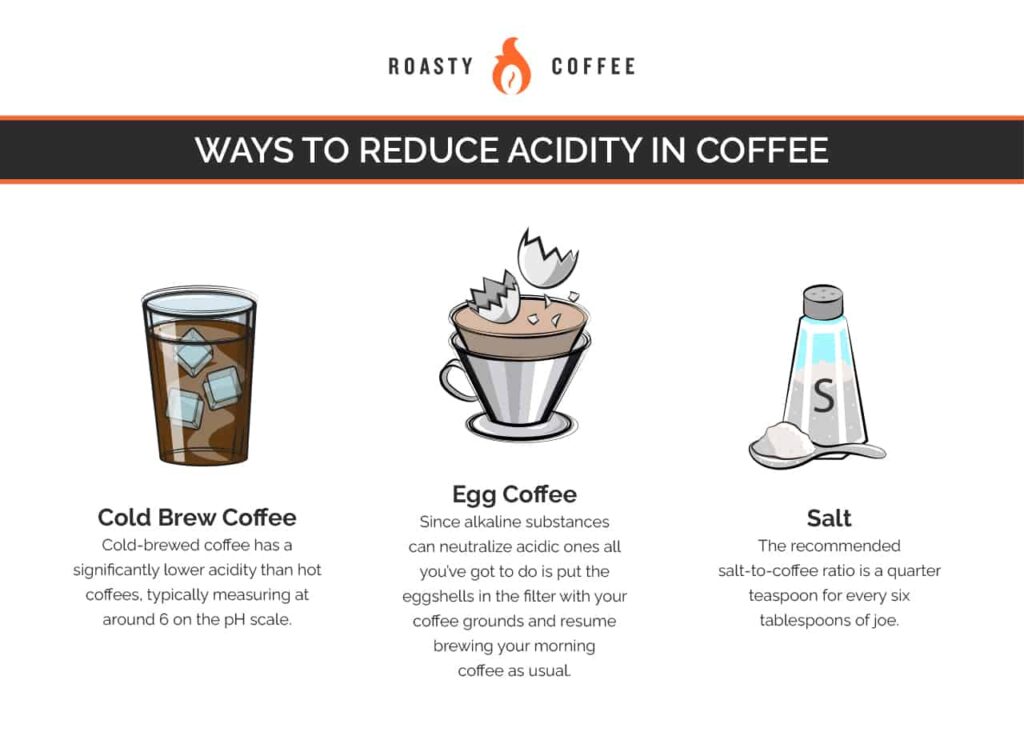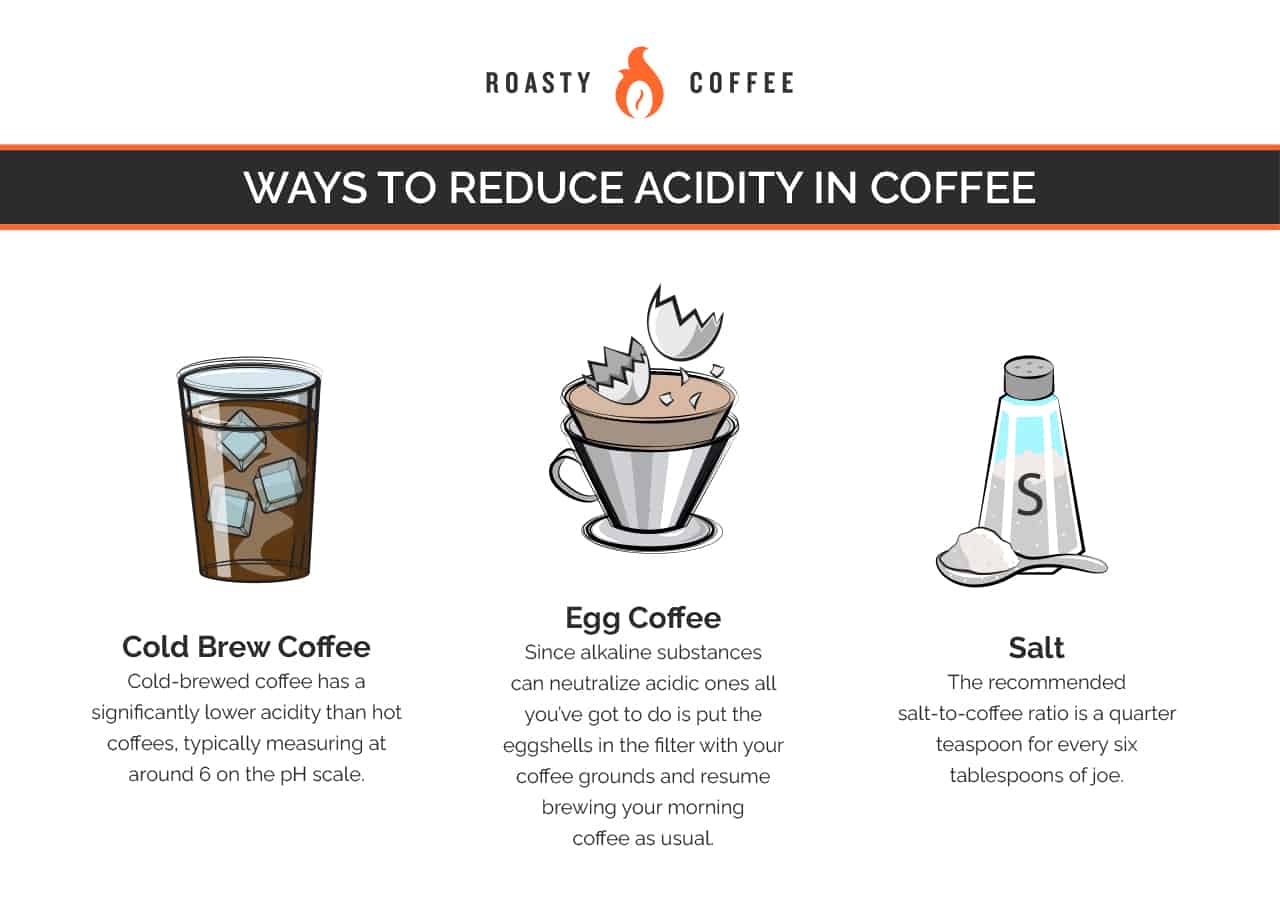
Brewing Better: How to Reduce Acid in Coffee for a Smoother Cup
For many, the morning ritual of brewing coffee is sacred. The aroma, the warmth, the promise of a productive day – it’s a comforting start. But for some, this ritual is often accompanied by a less pleasant sensation: the acidity. That sharp, sometimes stomach-churning bite that can linger long after the last sip. If you’re among those who find coffee’s acidity a barrier to enjoyment, you’re in the right place. This article delves into how to reduce acid in coffee, offering actionable strategies to transform your brew from a potential irritant to a source of pure, unadulterated pleasure.
Coffee acidity isn’t inherently bad; it’s a natural characteristic of the bean, contributing to its flavor profile. However, for those with sensitive stomachs, acid reflux, or simply a preference for a smoother cup, minimizing this acidity is crucial. We will explore various methods, from bean selection to brewing techniques, empowering you to customize your coffee experience.
Understanding Coffee Acidity
Before we dive into the solutions, it’s important to understand what causes coffee’s acidity. Acidity in coffee is primarily due to the presence of various acids, including chlorogenic acids (CGAs), quinic acid, and citric acid. The levels of these acids are influenced by several factors, including the coffee bean’s origin, roast level, and brewing process.
Generally, lighter roasts tend to have higher acidity levels than darker roasts. This is because the roasting process breaks down some of the acids. However, this doesn’t necessarily mean that darker roasts are always the answer; they can also have a more bitter flavor profile, which some find undesirable.
The origin of the coffee bean also plays a significant role. Beans grown at higher altitudes often exhibit higher acidity. Additionally, the processing method – whether it’s washed, natural, or honey-processed – can influence the final acidity level. Washed coffees often have a cleaner, brighter acidity, while natural processed coffees can have a more complex, fruit-forward acidity.
Bean Selection: The First Step in Reducing Acidity
Choosing the right beans is a fundamental step in how to reduce acid in coffee. Several factors related to the beans themselves can impact the final acidity of your cup. Consider these points when purchasing your coffee beans:
- Roast Level: As mentioned earlier, darker roasts generally have lower acidity. Look for beans labeled as “dark roast,” “French roast,” or “Italian roast.” These beans have undergone a longer roasting process, which breaks down many of the acids.
- Bean Origin: While origin can influence acidity, it’s not always a straightforward predictor. However, beans from certain regions are known for lower acidity. For example, Sumatran beans are often praised for their low acidity and full body. Experimenting with different origins is a great way to find beans that suit your palate.
- Processing Method: Consider coffees processed using the natural or honey methods. These methods can sometimes contribute to a lower perceived acidity, though this can vary.
- Freshness: Freshly roasted beans are ideal, but it’s worth noting that as beans age, some of the acidity can dissipate. However, stale beans also lose their flavor, so finding the right balance is key.
Brewing Techniques to Minimize Acidity
Beyond bean selection, the brewing process itself offers several ways to minimize acidity. These techniques allow you to control the extraction process and influence the final acidity of your cup. Here’s how to reduce acid in coffee through your brewing methods:
- Grind Size: The grind size significantly impacts the extraction process. A coarser grind results in less acidity because it slows down the extraction. Finer grinds extract more quickly, leading to higher acidity. Experiment with different grind sizes to find the ideal balance for your brewing method.
- Water Temperature: Water temperature plays a crucial role. Using water that is too hot can extract more acids, leading to a more acidic cup. Aim for a water temperature between 195-205°F (90-96°C). If you don’t have a thermometer, let the water sit for about a minute after boiling before pouring.
- Brewing Time: Shorter brewing times can result in less acidity. Techniques like the French press, which involve longer immersion times, can extract more acids. Consider using methods like the pour-over or drip coffee, which have shorter brewing times.
- Brewing Method: Different brewing methods extract flavors and acids differently. As mentioned, pour-over and drip methods often produce less acidic coffee. Cold brew is another excellent option, as the cold brewing process extracts fewer acids.
- Pre-infusion (Blooming): Pre-infusion, also known as blooming, involves pouring a small amount of hot water over the grounds and allowing them to “bloom” for about 30 seconds before continuing the brewing process. This allows the coffee to degas, which can reduce acidity.
Equipment and Additives: Further Strategies
Beyond bean selection and brewing techniques, some equipment and additives can also help how to reduce acid in coffee:
- Coffee Makers: Some coffee makers are designed to reduce acidity. Look for models that offer temperature control, allowing you to dial in the perfect brewing temperature.
- Coffee Filters: Paper filters can absorb some of the oils and acids present in coffee. Using a paper filter in your French press or pour-over can help reduce acidity.
- Additives: Some additives can help neutralize the acidity.
- Eggshells: Adding crushed eggshells to your coffee grounds can help reduce acidity. Eggshells are alkaline and can neutralize some of the acids.
- Baking Soda: A pinch of baking soda added to your coffee grounds can also help reduce acidity. However, use this sparingly, as too much baking soda can alter the flavor of your coffee.
The Importance of Experimentation
The ideal method for reducing acidity is often a matter of personal preference. What works for one person may not work for another. Therefore, experimentation is key. Try different beans, brewing methods, grind sizes, and water temperatures to find the combination that best suits your taste and tolerance for acidity. Keep a journal to track your experiments and note the results. This will help you refine your process and consistently brew a less acidic cup.
Finding the perfect cup of coffee is a journey, not a destination. The strategies for how to reduce acid in coffee outlined in this article provide a solid foundation for minimizing acidity and maximizing enjoyment. By understanding the factors that influence acidity and experimenting with different techniques, you can tailor your coffee experience to your specific needs and preferences. This will involve some trial and error, but the reward – a smooth, flavorful, and stomach-friendly cup of coffee – is well worth the effort.
Troubleshooting Common Issues
Even with the best techniques, sometimes things don’t go as planned. Here are some common issues and how to address them when learning how to reduce acid in coffee:
- Coffee Still Too Acidic: If your coffee still tastes too acidic, even after adjusting your brewing parameters, consider trying a darker roast bean or experimenting with a coarser grind.
- Coffee Tastes Bitter: Sometimes, reducing acidity can lead to bitterness. This is often a sign of over-extraction. Try using a slightly finer grind or reducing your brewing time.
- Weak Coffee: If your coffee tastes weak, you may need to adjust your coffee-to-water ratio. Use more coffee grounds or reduce the amount of water.
Conclusion: Brewing Your Perfect Cup
Mastering how to reduce acid in coffee is an ongoing process of learning and refinement. It involves understanding the science behind coffee, experimenting with different techniques, and paying attention to your own preferences. By following the guidelines in this article, you can embark on a journey towards a smoother, more enjoyable coffee experience. Remember, the key is to experiment, adjust, and find what works best for you. The perfect cup of coffee is within your reach!
With dedication and the right knowledge, you can transform your morning coffee ritual from a potential discomfort into a source of pure pleasure. Enjoy the process, savor the flavors, and embrace the joy of a truly exceptional cup.
[See also: Related Article Titles]


